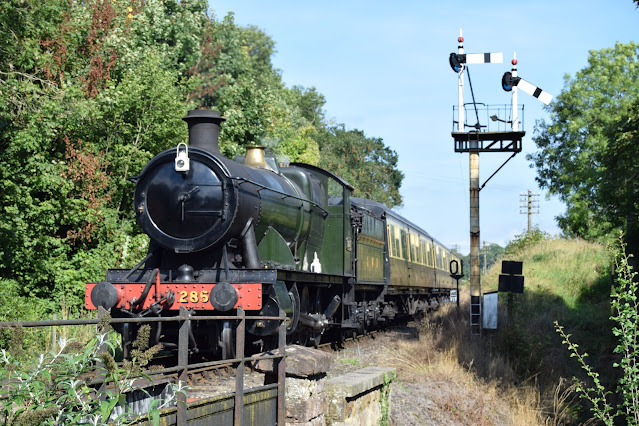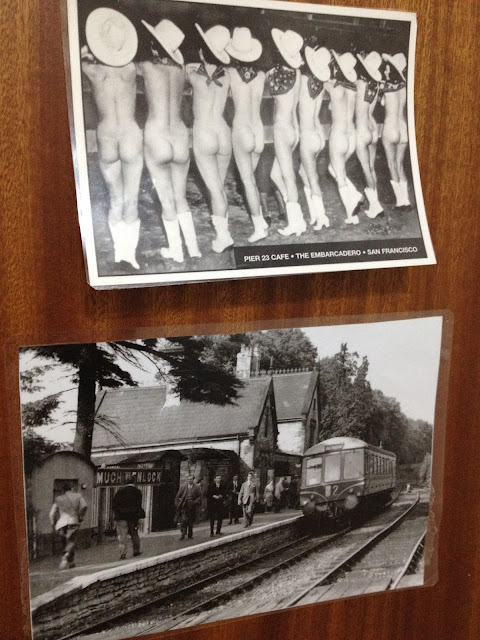My wife tells me that a mutual friend always dispenses with
his shorts for the year on this day – the 30th September. I try to
hold out in this respect as long as I can, too. However, whereas he washes,
dries, irons, folds and puts them carefully away in a chest of drawers for the duration
of the winter, I chuck mine in the bin because the arse has fallen through with
too much sitting around on this computer chair.
I have stuck it out until today this year, too. It was cool
and wet this morning, so much so that I went to photograph Class 66 No. 66780
The Cemex Express in the car rather than on my bike. I justified this gross
waste of precious unleaded because I didn’t want to stand around at the station
like “a wet mess”, as my mother used to describe the cat, when he reappeared
after rain. I might also have caught a chill before my holiday, and since
visiting George Washington’s house at Mount Vernon, it is stamped indelibly in
my consciousness that ignoring a soaking from the rain can sometimes have very
unfortunate consequences, even for the best of us. Additionally, I thought that
I could - with a little detour, admittedly, take in 3 petrol stations to try to
fill up before we depart for our imminent holiday in Scotland, where the current
forecast is for a further week’s rain. Luckily, I still had enough petrol in my
tank to wander around looking for petrol. I was also armed with a tip-off that
one of the garages, at least, was dispensing the stuff earlier today.
Unfortunately, all 3 were without and I now have rather less
than I started with. On the plus side, The Cemex Express - express being
something of a misnomer for a heavy freight train - was busy taking coal to the
power station so that we can all have warm homes for Christmas, which slowly approaching
festivity is apparently now all anyone is interested in knowing about. At least
Ratcliff burns coal and not gas, for which the prices, as well as the fumes,
have gone through the roof, so thank goodness for cheap foreign coal imported
through Immingham. But, will there be enough turkeys wrapped in plastic and CO2?
Will there be enough petrol to bring the relations down in time for a
ridiculously large meal and the traditional reopening of family feuds? Will there be enough
East Europeans who can be persuaded to return to Amazon in time to send out our
Christmas presents? [If I was one of them, I’d be tempted to tell the UK
government where they can stuff their turkey.] Please come back. All is
forgiven. We love having you here, really, we do.
In GBRf livery, No.66780 was repainted at Eastleigh in 2018 and named at a ceremony at Dove Holes Quarry near Buxton, where its nameplate was unveiled by Pete Waterman in the following year. Cemex is a Mexican multi-national company. In the UK, it is a major supplier of cement, concrete, mortar, screed, aggregate, railway sleepers, blah, blah, blah, with various factories in the North Midlands situated near to the Buxton area limestone quarries and like them just outside the Peak District National Park. I’ve heard anecdotally that there are supply issues also with building materials at present, though as DIY activity is somewhat far down my list of “things-to-do”- in fact, it’s at the bottom - I will not be chasing round retailers and running out of petrol looking for cement anytime soon. My late father-in-law once gave me a massive DIY Guidebook as a Christmas present. Maybe it was a joke, anyway I hope I did not look too disappointed. If only there had been a timely interruption to the supply chain.
The wonky Fiskerton signalbox could have done with the careful application of a suitable Cemex product during its lifetime, as well.


































